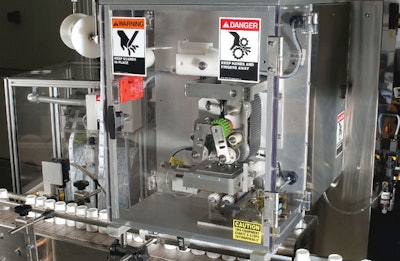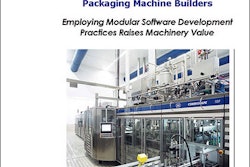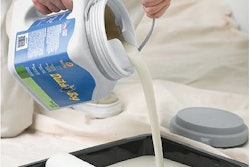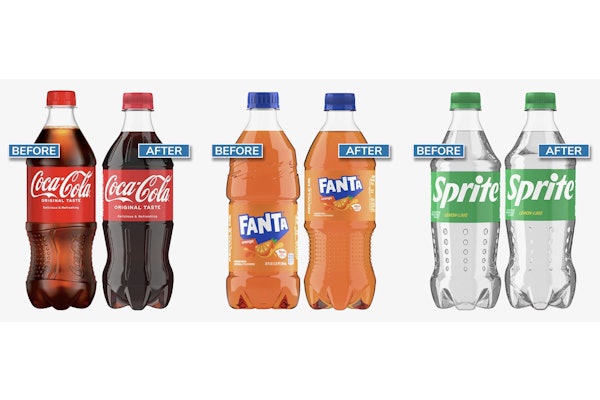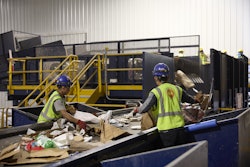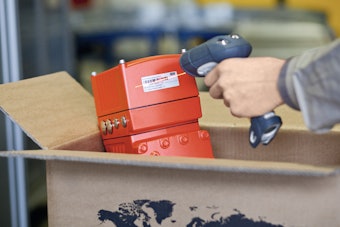Teva Pharmaceuticals, the world’s largest generics pharmaceutical manufacturer, is cutting costs significantly at its Sellersville, PA, facility following a conversion from desiccant canisters to packets. The facility fills millions of bottles per year, most of it sold through major chain drugstores.
Teva had been experiencing line speed and reliability challenges with the canisters before switching to a high-speed automated desiccant packet system from Multisorb Technologies and Active-Pak Automation (APA), a division of Multisorb. Multisorb provides the packets in roll form, and APA provides the equipment that cuts and fills the packets into the bottles. The new system began operation in June 2004.
Reliable desiccant insertion is crucial because moisture protection is often required for pharmaceutical stability, particularly for certain classes of drugs. Teva’s line of heart medications such as Enalapril Maleate and Moexipril HCl are especially prone to moisture-induced degradation.
Faster line speeds
Teva had been using 3¼4-g, 1-g, and 2-g desiccant canisters, but hopper jams and line downtime limited Teva to running its automated insertion equipment at speeds of only 25 to 75 bpm, depending on bottle size. Also, canister supply shortages posed a constant concern.
As a result of switching to Multisorb’s StripPax® Sorbent packets and using packet insertion equipment supplied by APA, Teva performs high-speed, reliable desiccant insertion at speeds to 125 bpm. Although the insertion equipment is capable of speeds to 300 bpm, other considerations keep actual rates lower at Teva.
“We were experiencing supply and cost issues with desiccant canisters, and changing over to packets has improved reliability and made a lot of sense economically,” says Wayne Kieffer, Teva’s senior buyer, who suggested the packeting system to Teva’s packaging engineers in early 2003. Although some lines are still using remaining canisters in stock, Kieffer says that most product lines—involving a few dozen products—have switched over to packets. Kieffer tells Packaging World that he expects the conversion to be completed by April 2005. As Teva gains new Food and Drug Administration approvals for products, packets will be the first choice for desiccants, he adds.
Complies with FDA
Recent FDA regulations regarding lateral changes to pharmaceutical packaging enabled Teva to institute the desiccant switch almost immediately.
“All that was needed was simple documentation in Teva’s annual report to the FDA,” says Adrian Possumato, Multisorb’s business development leader for pharmaceutical markets, who helped Teva implement the new system. “No stability testing was required prior to initiating the change, and Multisorb supplied Teva with all the comparison information between the previously used canisters and the new packets. Teva simply forwarded the information to their internal regulatory personnel to confirm the switch.”
The new system has been popular on Teva’s production floor. The APA equipment’s sensors, controls and sophisticated programmable logic controller eliminate packet miscuts and ensure insertion reliability, and lines are capable of running at optimal speeds with any packet size, according to APA.
Another advantage of the equipment has been its mobility—the two portable, wheeled APA units are each moved between two solid-dose lines, according to Sellersville plant project engineer Michelle Keller. The unit is positioned downstream of the filler.
Keller says the bottled products comprise pill or tablet counts from 30 to 1ꯠ. One or two packets are added per bottle, depending on the product stability requirements. For double-packet fills, the APA unit precounts two packets before delivering them at once, Keller tells PW. She says the bottles are all plastic, typically high-density polyethylene.
“Our operators have given the system rave reviews for its flexibility and reliability,” Keller says. “Multisorb has helped us reduce costs and increase line speed, uptime, and supply chain service. This improvement in our automated product lines goes a long way toward our vision of quality, efficiency, and speed.”
—Rick Lingle
See sidebar to this article: Definitions to measure packaging line productivity
See sidebar to this article: Gaining ROI through anticounterfeiting tactics
See sidebar to this article: Insights into FDA CFR 11 and packaging
